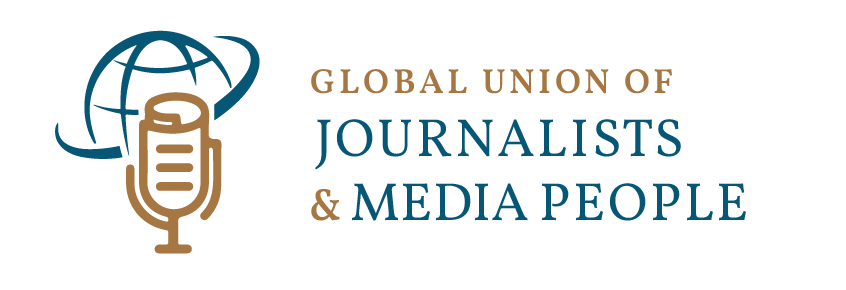
Jamal Al Hashemi
صحفي
Al-Aqsa flood
Palestine is the geographic region located southeast of the Mediterranean Sea up to the Jordan Valley. In some definitions, the definition extends to include regions east of the Jordan River. It is located in Western Asia and connects to North Africa by being located and the Sinai Peninsula at the meeting point of the two continents, forming the southwestern part of the Levant connected to Egypt. ; It was a crossing point and intersection of cultures, trade, and politics, in addition to its centrality in the history of religions. Therefore, many of its cities have historical or religious importance, most notably Jerusalem. Today, several overlapping political entities lie on the borders of the historical region: the State of Israel (which was established in the 1948 war after the displacement of hundreds of thousands of Palestinians from their homeland), the West Bank and the Gaza Strip, which Israel occupied in the 1967 war. In addition to Israeli military control over the entire West Bank, the residents of the cities are subject to The occupied territories have been governed by a Palestinian autonomous authority that has managed the civil affairs of the population since 1994 based on the Oslo Accords, in addition to the Gaza Strip being completely subject to the Palestinian National Authority since Israel’s withdrawal from the Gaza Strip in 2005. In 2007, the division of political authority in the autonomous territories led to the emergence One authority in the Gaza Strip and another in the cities of the West Bank.[2][3][4][5][6] The population within these borders is estimated at approximately 11,900,000 people,[7] as a large part of the population of historical Palestine today are Arabic speakers (Muslims and Christians), while the other part of its population is Hebrew speakers, followers of the Jewish religion, immigrants, and children of other peoples. Today, their percentage is 49%, while Arabs constitute 46%.
The Arabs, Palestinians, and a broad sector of supporters of the Palestinian cause consider it the capital of the future State of Palestine after liberation, as stated in the Palestinian Declaration of Independence document that was issued in Algeria on November 15, 1988 AD. (Historically, their Jebusite ancestors were the first to build the city and inhabit it in the fifth millennium. BC). While Israel considers it its unified capital, following its annexation of the eastern part of the city in 1980 AD, which it occupied after the 1967 war (the Jews consider it their religious and national capital for more than 3,000 years). The United Nations and the international community do not recognize Jerusalem as the capital of Israel, consider East Jerusalem part of the Palestinian territories, and do not recognize its annexation to the Hebrew state, with some exceptions. Jerusalem is located within the Hebron mountain range and is located in the middle of the region between the Mediterranean Sea and the northern end of the Dead Sea. This city has grown and expanded its borders much more than they were in previous times.
Jerusalem is considered a holy city for followers of the three main Abrahamic religions: Judaism, Christianity, and Islam. For the Jews, the city became the holiest site after the Prophet and King David conquered it and made it the capital of the unified Kingdom of Israel around the year 1000 BC. Then his son, Solomon, built the first temple there, as the Torah states. For Christians, the city became a sacred site after Jesus Christ was crucified on one of its hills called “Golgotha” around the year 30 AD, and after Saint Helena found the cross on which he was hung inside the city about 300 years later, according to what was stated in the New Testament. As for Muslims, Jerusalem is the third holiest city after Mecca and Medina, and it is the first of the two qiblahs, as Muslims used to turn to it in their prayers after it was imposed on them around the year 610 AD. It also represents the site from which the Prophet of Islam, Muhammad bin Abdullah, ascended to heaven according to For Islamic belief. As a result of this great religious importance, the Old City contains a number of religious monuments of great importance, such as: the Church of the Resurrection, the Buraq Wall and Al-Aqsa Mosque - which consists of several sacred monuments, the most important of which are the Dome of the Rock Mosque and the Qibla Mosque, despite its area reaching 0.9 square kilometers ( 0.35 square miles).
During its long history, Jerusalem was destroyed twice, besieged 23 times, attacked 52 times, and conquered and lost again 44 times. Humans have settled on the site where the city was built since the fourth millennium BC, making Jerusalem one of the oldest inhabited cities in the world. The Old City is classified as a World Heritage Site, and it was customary to divide it into 4 neighborhoods, but the names used today for each of these neighborhoods: the Armenian Quarter, the Christian Quarter, the Honor Neighborhood (or the Jewish Quarter), and the Muslim Quarter, only appeared. In the early nineteenth century. Jordan nominated the Old City for inclusion on the list of threatened World Heritage Sites in 1982.
The dispute over the status of Jerusalem is a central issue in the Arab-Israeli conflict. After the 1967 war between the Arab and Israeli armies, the Israeli government occupied East Jerusalem, which belonged to Jordan, and annexed it to Israel and considered it an integral part of it. However, the international community, in its majority, did not recognize this annexation, and still views East Jerusalem as a disputed area. From time to time, he calls for resolving this issue through peaceful negotiations between Israel and the Palestinians. Also, the majority of countries in the world do not recognize Jerusalem as the capital of Israel, so most foreign embassies and consulates are located in the city of Tel Aviv and its suburbs. The Palestinians have demanded - and still are - East Jerusalem as the capital of a Palestinian state, since the Israelis occupied it, but on July 31, 1980, the Israeli Parliament approved the “Basic Law: Jerusalem, the Capital of Israel,” which made the Declaration of Jerusalem, with the borders drawn by the Israeli government in 1967, a principle. Constitutionally in Israeli law. The Security Council responded with two resolutions, No. 476 and No. 478 in 1980, blaming Israel for approving this law and affirming that it violates international law, and would not prevent the continued application of the Fourth Geneva Convention of 1949 to the eastern part of Jerusalem, as the city is supposed to be within the governorate. Jerusalem of the State of Palestine. The Palestine Liberation Organization ran a center in Orient House in Jerusalem, but it was closed in 2001 by order of the Israeli Ministry of Interior.
Most Israeli government departments are located in West Jerusalem, and they include: the Israeli Parliament or Knesset, the residences of the Prime Minister and Head of State, and the Supreme Court. Jerusalem is also the headquarters of the Hebrew University, the Israel Museum and the Shrine of the Book, and it also has the Biblical Zoo, which is classified as an important attraction in domestic tourism, and Teddy Stadium, which is considered one of the most important and largest football stadiums in Israel.
3678
Shar this content:


